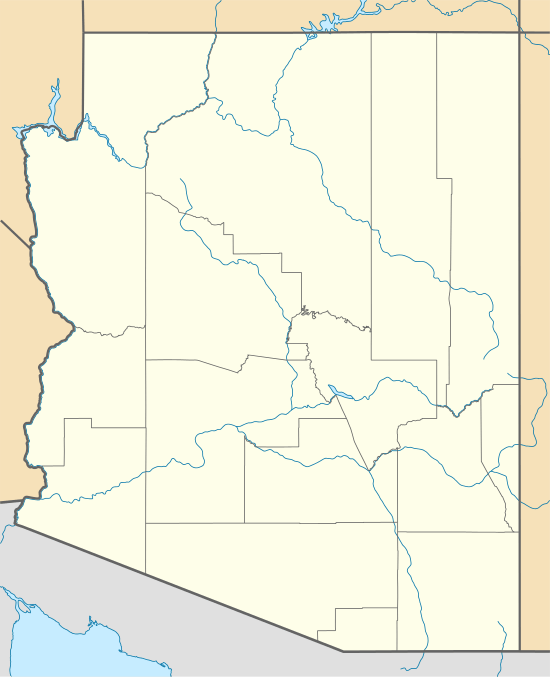Desert Botanical Garden
| Desert Botanical Garden | |
|---|---|
|
The main entrance of the Desert Botanical Garden | |
 | |
| Location | Phoenix, Arizona, US |
| Coordinates | 33°27′47″N 111°56′38″W / 33.463°N 111.944°WCoordinates: 33°27′47″N 111°56′38″W / 33.463°N 111.944°W |
| Area | 140 acres (57 ha) |
| Established | 1939 |
| Founder | Arizona Cactus and Native Flora Society |
| Habitats | |
| Plants | 21,000 |
| Species | 4,000 |
| Collections |
|
| Website |
www |
The Desert Botanical Garden is a 140-acre (57 ha) botanical garden located in Papago Park, at 1201 N. Galvin Parkway in Phoenix, central Arizona.
Founded by the Arizona Cactus and Native Flora Society in 1937[1] and established at this site in 1939, the garden now has more than 21,000 plants, in more than 4000 taxa, one-third of which are native to the area, including 139 species which are rare, threatened or endangered.
Of special note are the rich collections of agave (176 taxa) and cacti (10,350 plants in 1,350 taxa), especially the Opuntia sub-family. Plants from less extreme climate conditions are protected under shadehouses. It focuses on plants adapted to desert conditions, including an Australian collection, a Baja California collection and a South American collection. Several ecosystems are represented: a mesquite bosque, semidesert grassland, and upland chaparral.
The Desert Botanical Garden has been designated as a Phoenix Point of Pride.[2]
History
In the 1930s, a small group of local citizens became interested in conserving the fragile desert environment. One was Swedish botanist Gustaf Starck, who found like-minded residents by posting a sign, “Save the desert,” with an arrow pointing to his home. In 1936, they formed the Arizona Cactus and Native Flora Society (ACNFS) to sponsor a botanical garden to encourage an understanding, appreciation and promotion of the uniqueness of the world’s deserts, particularly the local Sonoran Desert.
Eventually Gertrude Webster, whose home encompassed all of what is today the neighborhood of Arcadia, joined the Society. She offered her encouragement, connections and financial support to establish the botanical garden in Papago Park.
She served as president of the Society’s first Board of Directors and Gustaf Starck, W. E. Walker, Rell Hasket, L. L. Kreigbaum, and Samuel Wilson were the five vice president. The latter also served as Treasurer. Paul G. Olsen was Secretary. In 1938, after much work by the ACNFS, the board hired the Garden’s first executive director, George Lindsay, who oversaw the first planting on the grounds. The Desert Botanical Garden opened in 1939 as a non-profit museum dedicated to research, education, conservation and display of desert plants.
Volunteerism
Volunteers were essential in the Garden’s creation and development, when the staff was small and finances tight. These early supporters, including a few amateur botanists who donated their own plant collections, helped plan and execute plant sales, photography and art exhibits, and numerous public events.
Volunteers remain a Garden asset, sharing their time, talents and professional expertise. They work closely with staff to maintain the Garden’s status as a premier plant research institution and serve as members of the Board of Trustees, setting policy and governing the Garden.
Gallery

See also
References
- ↑ Deborah A. Starr, "Desert Botanical Garden", Horticulture, March 1994:48-54.
- ↑ "Phoenix Points of Pride". Archived from the original on October 1, 2006. Retrieved October 18, 2006.
External links
| Wikimedia Commons has media related to Desert Botanical Garden. |
- Official Desert Botanical Garden website

